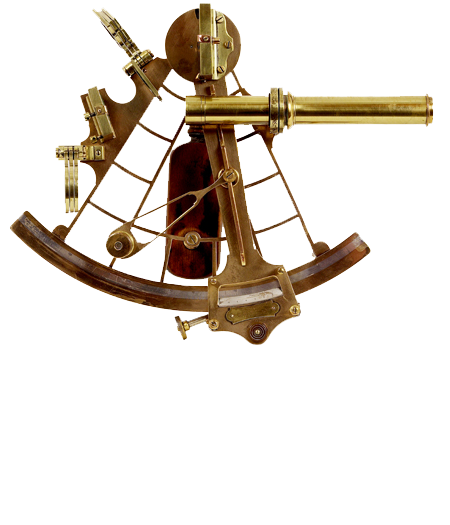
NAVICERNE NAME
The name Navicerne was inspired by two Latin words – navis (ship, and a root word of “navigation”) and cernere, from cerno (to see, discern; to understand, perceive; to decide, determine).
Since about 3500 BC and the construction of boats large enough to transport goods, sailors have endeavored to develop and improve their navigational skills. While the methodologies, instruments and charts aiding navigators have changed greatly over thousands of years, the essential elements of navigation have not – accurately fixing your current position, determining which direction you must take to reach your destination, and guiding your ship safely and swiftly to its next port.
The sextant, designed in 1757 by Captain (later Admiral) John Campbell of the British Navy, enabled use of the lunar distance method to find longitude at sea. To use it effectively required a high degree of skill and knowledge of mathematics that most mariners did not have. Englishman John Harrison’s invention of the chronometer, which became widely adopted by 1825, dramatically increased a navigator’s ability to find longitude accurately. In this spirit, Navicerne seeks to help clients navigate challenging endeavors successfully.
